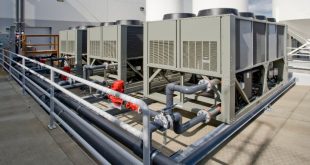In the food and beverage industry, maintaining consistent quality and ensuring safety during production are critical factors that can make or break a brand. From manufacturing beverages in massive quantities to producing a variety of processed foods, accurate level monitoring plays a vital role in keeping operations efficient, safe, and hygienic. This is where level indicators come into play, as they ensure that the levels of liquids, solids, and semi-solids in tanks and vessels are carefully monitored throughout the production process.
Level indicators have become indispensable in food and beverage processing facilities due to their accuracy and reliability in maintaining the optimal level of ingredients, ensuring compliance with safety standards, and preventing costly production errors. In this blog, we’ll explore the importance of level indicators in food and beverage processing and how they contribute to a streamlined, safe, and efficient operation.
What Are Level Indicators?
Level indicators are instruments designed to measure and display the amount of material (liquid, solid, or gas) present in a tank, vessel, or silo. They provide real-time information on the material’s level, helping operators keep track of volume and ensuring that processes continue smoothly. The type of level indicator chosen depends on factors such as the nature of the material, operating environment, and required accuracy.
In food and beverage processing, the level of ingredients such as water, oils, syrups, grains, and other materials must be controlled to maintain product consistency, prevent overflow, and avoid equipment damage.
Why Level Indicators Are Critical in Food and Beverage Processing
- Ensuring Accurate Ingredient Measurement
One of the key requirements in the food and beverage industry is the accurate measurement and control of ingredients. Level indicators provide operators with precise data about the level of liquids and solids in storage tanks or processing vessels. Manufacturers can maintain the quality and consistency of their products.
- Preventing Overflow and Spillage
Overflow and spillage can have severe consequences in food and beverage processing, leading to production delays, waste of valuable resources, and even contamination risks. By providing real-time information about the level of contents in tanks and silos, level indicators allow operators to take immediate action if the level exceeds a set threshold, preventing overflow.
- Maintaining Hygiene and Safety Standards
In the food and beverage industry, hygiene and safety are top priorities. Strict regulations require manufacturers to comply with standards that ensure the safety of food products. Level indicators play a crucial role in maintaining these standards.
=
Enhancing Process Automation
Automation is becoming increasingly important in food and beverage production, where consistency, speed, and efficiency are crucial to meet growing consumer demand. Level indicators are integral to automated production systems, enabling machines and systems to work together seamlessly without the need for constant human intervention.
For example, in a fully automated bottling line, level indicators measure the level of liquid in storage tanks and feed the appropriate amount into each bottle. This not only enhances production speed but also ensures product consistency and reduces human error.
Types of Level Indicators Used in Food and Beverage Processing
Several types of level indicators are suitable for use in food and beverage processing, each offering unique advantages depending on the application. Some of the most commonly used types include:
– Float Level Indicators: These devices use a float that moves up and down with the liquid level, providing a simple yet reliable way to monitor tank levels.
– Magnetic Level Indicators: Using a magnetized float and a visual indicator, these devices are highly accurate and suitable for both liquid and gas applications.
– Capacitive Level Indicators: These measure changes in capacitance caused by the presence or absence of liquid, making them ideal for measuring liquids with varying viscosities.
– Ultrasonic Level Indicators: Using sound waves, these indicators are suitable for non-contact level measurement, making them ideal for hygienic applications in food processing.
– Radar Level Indicators: These use microwave signals to detect the level of liquids or solids in tanks, providing highly accurate measurements.
Conclusion
Level indicators are essential tools in the food and beverage industry. Ensuring that processes run smoothly. Products maintain their quality. And safety standards are met. From preventing overflow to optimizing resource use, they offer numerous benefits that contribute to a more efficient and sustainable production process.
Additionally, when used in conjunction with safety features like safety door handles, level indicators not only enhance operational efficiency but also ensure a safer working environment for employees. By incorporating the right level indicators into your food and beverage processing systems, you can achieve higher accuracy, reduce waste, and maintain the highest standards of quality and safety.
 Diverse Perspectives: Insights & Stories Exploring Ideas, Sharing Knowledge
Diverse Perspectives: Insights & Stories Exploring Ideas, Sharing Knowledge





